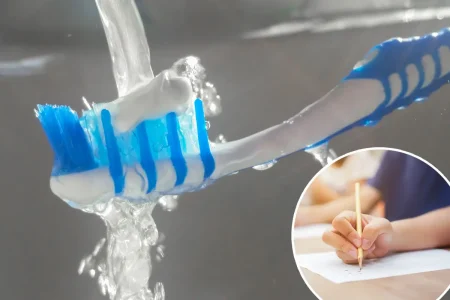Urban Raccoons Are Showing Signs of Domestication, Becoming Cuter to Humans
In a surprising twist of urban evolution, raccoons living in cities across America are beginning to show early signs of domestication, according to a fascinating new study published in the journal Frontiers in Zoology. These city-dwelling “trash pandas,” as they’re affectionately known, appear to be adapting to human environments in ways that make them not only more successful urban survivors but also increasingly adorable to the humans they share space with. Zoologist Raffaela Lesch from the University of Arkansas Little Rock, who co-authored the study, set out to investigate whether simply living in proximity to humans could initiate domestication processes in animals that we don’t typically consider domesticated. “Would raccoons be on the pathway to domestication just by hanging out in close proximity to humans?” Lesch wondered. Her research team discovered that urban raccoons are indeed developing physical characteristics associated with domestication syndrome—a set of traits commonly seen in domesticated animals like dogs and cats—most notably shorter snouts that make their faces appear more babylike and appealing to humans.
The research team analyzed numerous photos uploaded to iNaturalist, a citizen-science reporting app that allows people to document wildlife sightings. Through careful measurement and comparison, they found that raccoons in densely populated urban areas have snouts approximately 3.5% shorter than their rural counterparts. This may seem like a minor difference, but it represents a significant evolutionary adaptation occurring right before our eyes. According to evolutionary biologists, domestication typically begins when wild animals start adapting to environments created by humans. For raccoons, this process begins with their legendary dumpster-diving habits. “Trash is really the kickstarter,” Lesch explained. “All they have to do is endure our presence, not be aggressive, and then they can feast on anything we throw away.” This arrangement mirrors how cats first entered into their unique relationship with humans—tolerating human presence in exchange for easy access to food, whether that meant mice in ancient granaries or kibble in modern kitchens.
The researchers believe these changes reflect a fascinating hypothesis proposed in 2014, suggesting that mutations in neural crest stem cells during an animal’s development could lead to the cluster of traits known as “domestication syndrome.” These traits typically include not just shorter snouts but also floppy ears, white spots on fur, and—perhaps most importantly—reduced fear responses toward humans. While raccoons haven’t developed all these characteristics yet, the shorter snout length combined with their increasingly bold behavior around humans suggests they’re beginning to follow the evolutionary pathway that dogs and cats traveled thousands of years ago. What makes this particularly interesting is that unlike those ancestors of our beloved pets, raccoons are domesticating themselves without any deliberate breeding or selection by humans—it’s happening naturally as they adapt to urban environments.
This self-domestication process is driven by natural selection in human-dominated landscapes. Raccoons that can tolerate human presence without displaying aggression gain access to abundant food resources, giving them an evolutionary advantage. Over generations, this has led to urban raccoon populations that are less fearful and more adapted to exploiting the ecological niches we’ve inadvertently created for them. Unlike dogs, who were actively domesticated by humans selecting for traits like trainability and loyalty, or cats, who formed a mutually beneficial relationship with early agricultural societies, raccoons are domesticating themselves simply by living alongside us in cities. “It would be fitting and funny if our next domesticated species were raccoons,” Lesch mused. “I feel like it would be funny if we called the domesticated version of the raccoon the trash panda.”
The possibility of raccoons becoming the next domesticated companion animal has sparked enthusiasm among animal lovers on social media. Comments on videos explaining the research range from practical questions about “when the raccoon distribution system goes live” to observations about their intelligence and food-motivated behavior making them potentially “highly trainable.” Others point out that raccoons, being naturally intelligent and not possessing predatory instincts that would make them dangerous to humans, already have many qualities that would make them suitable pets. “Raccoons domesticating themselves like dogs and cats originally did is totally believable. They’re sooo smart,” noted one commenter, while others simply expressed desire for these charismatic creatures to become household companions. However, it’s worth noting that while raccoons may be on a path toward domestication, they remain wild animals with complex needs that most homes aren’t equipped to meet.
While the research points to an intriguing evolutionary trajectory, there are practical considerations that complicate the raccoon-as-pet narrative. For instance, in October, the New York City Health Department launched efforts to vaccinate urban raccoons against rabies, distributing fish-scented packets containing an oral vaccine throughout the city. This initiative aims to protect both humans and wildlife, highlighting that despite their increasing comfort around humans, raccoons still pose potential health risks. The path from wild animal to domesticated companion is a long one, spanning many generations of evolutionary adaptation. The current changes observed in urban raccoons represent just the earliest stages of what would be a much longer process. Nevertheless, this research offers a remarkable window into evolution happening in real-time, showing how human environments can shape the development of wild species—and how those species might, in turn, become increasingly integrated into our lives, whether we initially invited them or not.















